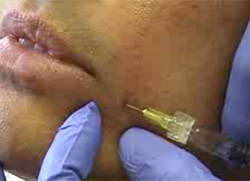JDD Interview with Dr. Christopher Bunick: An In-Depth Interview Focusing on Atopic Dermatitis and the LEVEL UP Period 2 Data
Switching from Dupilumab to Upadacitinib: Practice-Informing Evidence from LEVEL UP SWITCH
This exclusive video interview with Dr. Christopher Bunick unveils the practice-changing insights of the LEVEL UP SWITCH study, designed to guide dermatologists caring for adults and adolescents with moderate-to-severe atopic dermatitis [https://jddonline.com/atopicdermatitis/]. In a prospective, phase 4 trial, more than 200 patients who had not reached their treatment goals on injectable dupilumab transitioned directly—without a washout period—to oral upadacitinib. By reflecting the realities of everyday practice, this study offers clear expectations on speed of response, safety and sustained skin clearance when switching therapies.
LEVEL UP SWITCH stands apart from smaller, retrospective reports with its robust, real-world design and treat-to-target approach. By evaluating moderate and optimal endpoints such as EASI-90 skin clearance and near-complete itch relief at one and four months post-switch, the trial mirrors the AHEAD recommendations for timely therapeutic adjustments. Patients experienced rapid improvements, including in stubborn head and neck areas often resistant to biologics, underscoring upadacitinib’s ability to overcome persistent disease.
Safety data from the switch period were reassuring, with no new signals or serious infections and only mild, non-serious events such as acne [https://jddonline.com/category/acne/] or isolated herpes zoster [https://jddonline.com/project-atlas/inclusive-derm/herpes-zoster/] . Long-term follow-up over six years confirms a stable safety profile across diverse populations—including smokers and women on oral contraceptives—and no increase in major adverse cardiovascular events or venous thromboembolism. For dermatologists whose patients are not meeting treatment targets after three to six months of dupilumab, LEVEL UP SWITCH makes a compelling case for proactive transition to upadacitinib. Don’t miss our full conversation with Dr. Bunick—watch the interview now to equip your practice with the latest evidence in atopic dermatitis care.
If you’ve watched the video below and want to read more? Discover the article “Is Upadacitinib Cardioprotective in Chronic Inflammatory Diseases? A Review of Major Adverse Cardiovascular Events and Venous Thromboembolism in Atopic Dermatitis” from the May 2025 JDD issue here [https://jddonline.com/articles/upadacitinib-cardioprotective-in-chronic-inflammatory-diseases-review-of-major-adverse-cardiovascular-events-venous-thromboembolism-in-atopic-dermatitis-S1545961625P9049X/ ].














